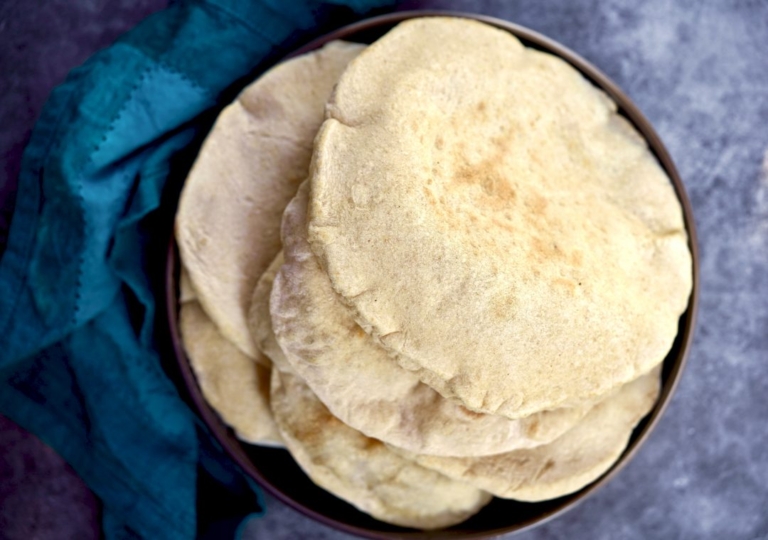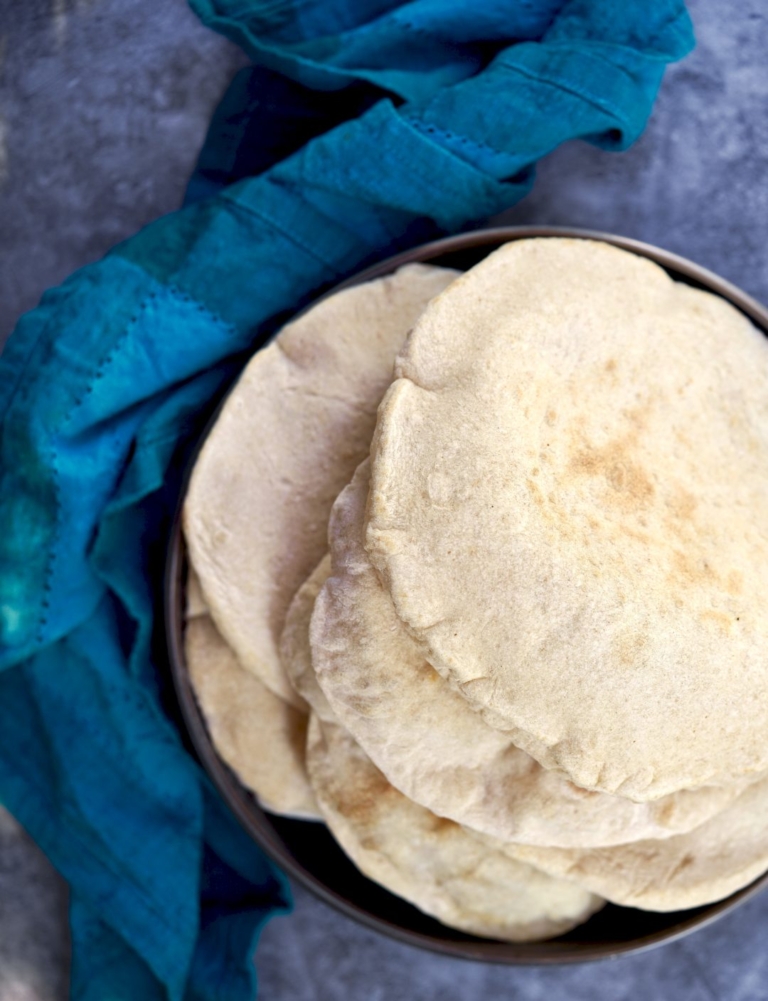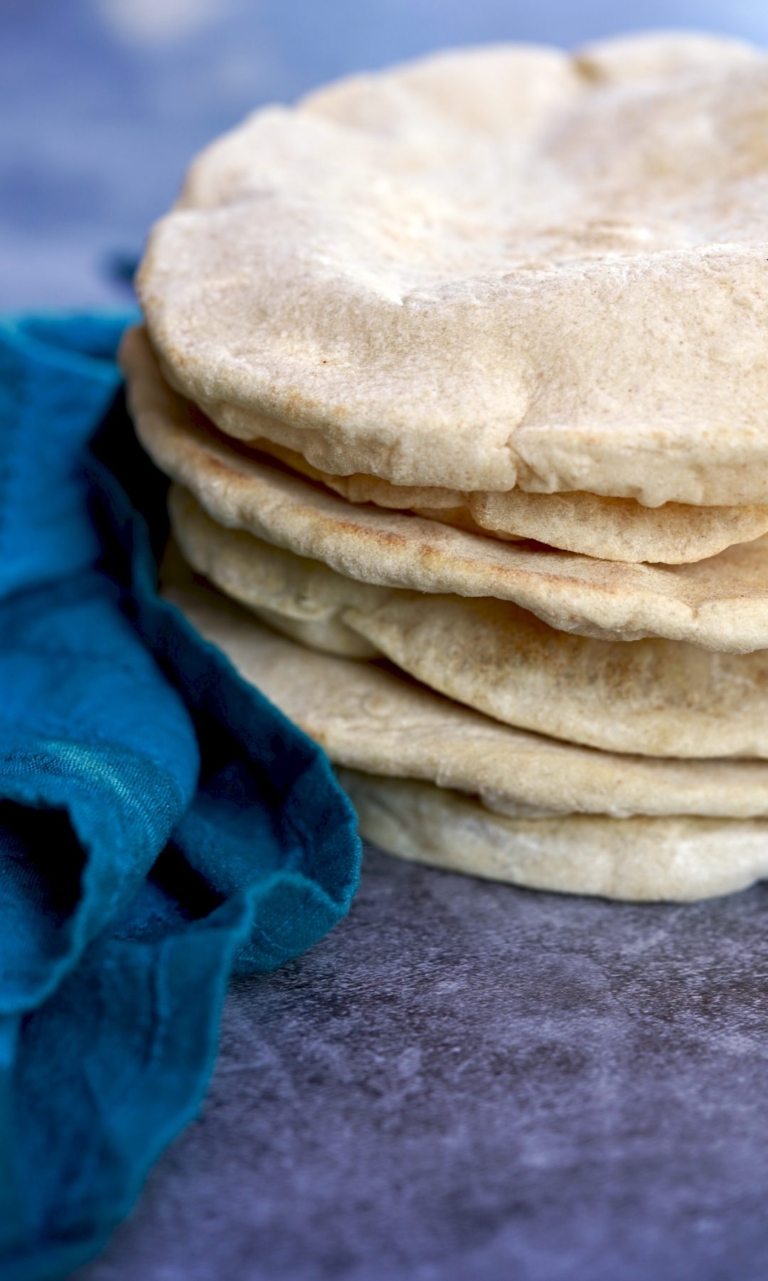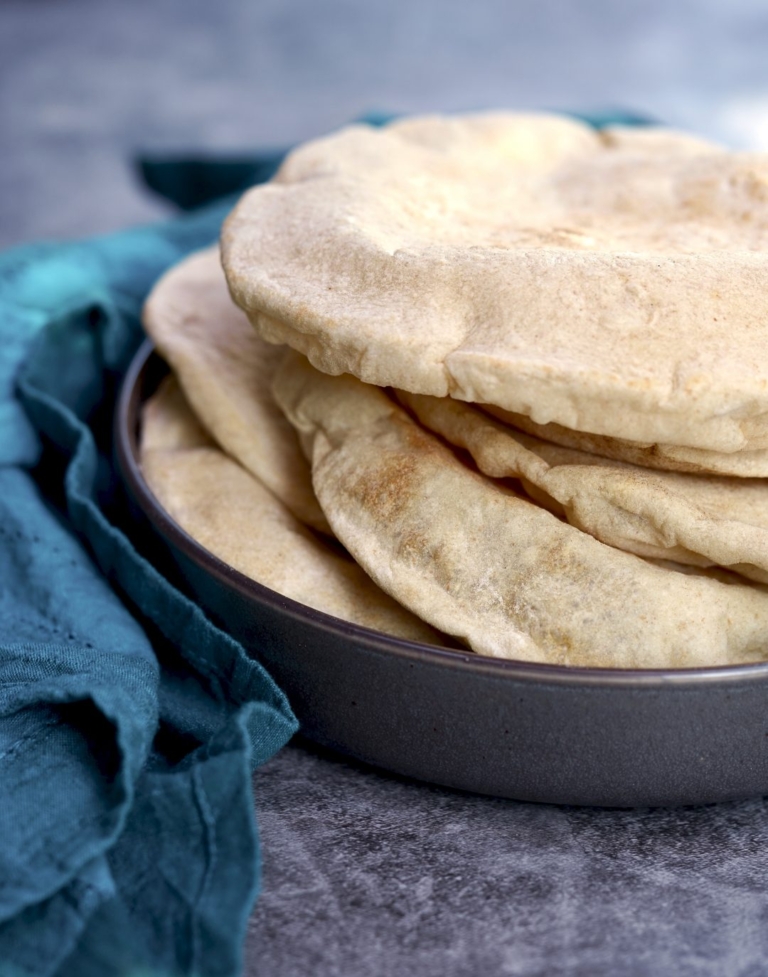Homemade Pita Bread

Sometimes homemade is simply better, as is the case with pita bread. Be honest, you know exactly what I’m talking about. While store-bought pita has its purpose, when making homemade bread is not an option, but a lot is lost by sitting on the shelf. And that cardboard taste is real. I’m not a fan at all.
Homemade pita bread is truly life-changing if you’ve never made it, it’s also substantially easier than one might expect. If you’ve made my felafel recipe, now it’s time to make it again, but this time with homemade pita. The New York Times published a recipe by David Tanis for homemade pita, it is the gold standard. Pita is leavened, so it does require a rising stage, so it’s not as time-consuming as most breads it’s considered one of the easiest “breads” to master.
History of Pita Bread
Pita bread has been a staple in the Middle East for over 4,000 years. This bread was originally served both as bread and as a utensil. Pita quickly spread to the East and many Mediterranean countries. It later spread to North Africa, the Arabian Peninsula, as well as India and Afghanistan. Pita is a Greek term that means “flat”. So, besides its round and flat shape, the main distinguishing characteristic of this bread is that it has an air-filled pocket between two flat layers
The Process
The first important step in the process is to bloom the yeast, a necessary hydration step when baking with active dry yeast. Yeast is best purchased in small quantities and used as soon as possible. When you combine yeast with warm water, a little of the flour, and a pinch of sugar, it should show activity within a few minutes. This tells you the yeast is fresh. Provided your kitchen is not too cold. If nothing is visible after 20 minutes, discard the mixture and use a different batch of yeast. Unfortunately, there’s no way to revive old yeast.
The Trick To Baking Pita
When you’re ready to bake the pita, what’s essential is a very hot oven. Before you do that, place your cooking surface, such as a baking tray, cast iron pan, or even a pizza stone on its lowest oven shelf and allow it to heat up with the oven. This is the trick I use to make homemade matzo during Passover. If the oven and pan are hot, the pita will cook extremely fast and work its magic. Within minutes the pita will puff up. But watch carefully and don’t let it brown!
How the Pocket Gets Created
That special pocket inside the pita bread is what makes pita so different from most other types of bread. But what’s the science behind the making of the pita pocket? The pocket is formed as the dough rises through the huge amount of steam and very high baking temperature. The bread has two flat layers and it is baked very quickly at extremely high temperatures. Thanks to this process, the dough bakes rapidly and separates in its center while baking. This immediately creates a large air bubble, and the two layers are separated to form the inner pocket between them. The pita deflates as soon as it cools, but the pocket remains.
This recipe is made using a combination of whole wheat and all-purpose flour, this creates the texture I like the best. But feel free to try any flour combination you prefer, it’s easily adaptable. And even if you’re not up to making homemade felafel to go along with it, a pita-pocket sandwich is just as incredible.
Homemade Pita Bread
Ingredients:
- 1 cup warm water
- 2 teaspoons active dry yeast
- 1/2 teaspoon sugar
- 1/4 cup whole wheat flour
- 2 1/2 cups all-purpose flour
- 1 teaspoon kosher salt
- 2 tablespoons Extra Virgin olive oil
Directions:
- For the Sponge Starter: Place the water, yeast and sugar in a large mixing bowl. Stir to dissolve. Add the whole-wheat flour and 1/4 cup all-purpose flour and whisk together. Place the bowl, uncovered, in a warm (not hot) place and allow to sit undisturbed until the mixture is frothy and bubbling, about 15 minutes.
- Add the salt, olive oil and nearly all remaining all-purpose flour (reserve about 1/2 cup). With a wooden spoon, stir until the mixture forms a shaggy mass. Dust with a little reserved flour, then knead in the bowl for 1 minute, incorporating any stray bits of dry dough. ;Turn dough onto work surface. Knead lightly for 2 minutes, until smooth.
- Cover and let rest 10 minutes, then knead again for an additional 2 minutes. Try not to add too much reserved flour, the dough should be soft and a bit moist. (At this point, dough may refrigerate in a large zippered plastic bag for several hours or overnight. Bring dough back to room temperature, knead into a ball and proceed with recipe.)
- Clean the mixing bowl and put the dough back in it. Cover the bowl tightly with plastic wrap, then cover with a towel. Put the bowl in a warm place and leave untouched until the dough has doubled in size, about 1 hour.
- Heat oven to 475 degrees F. On bottom shelf of oven, place a heavy-duty baking sheet, large cast-iron pan or ceramic baking tile.
- Punch down dough and divide into 8 pieces of equal size. Form each piece into a little ball. Place dough balls on work surface, cover with a damp towel and leave for 10 minutes.
- Remove 1 ball (keeping others covered) and press into a flat disks with rolling pin. Roll to a 6-inch circle, then to an 8-inch diameter, about 1/8-inch-thick, dusting with flour if necessary. (The dough will shrink a bit while baking.)
- Carefully lift the dough circle and place quickly on hot baking sheet. After 2 minutes the dough should be nicely puffed. Turn over with tongs or spatula and bake 1 minute more. The pita should be pale, with only a few brown speckles. Transfer warm pita to a napkin-lined basket and cover so bread stays soft. Repeat with the rest of the dough balls.






